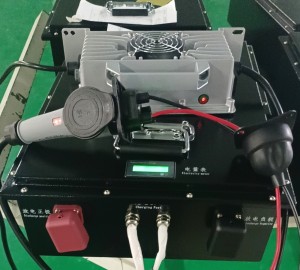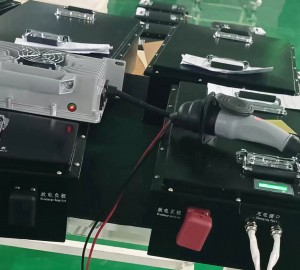How to Upgrade Your Golf Cart to Lithium Batteries?
In recent years, the popularity of lithium batteries for electric golf carts has surged due to their numerous advantages over traditional lead-acid batteries. Not only do lithium batteries offer a longer lifespan and faster charging capabilities, but they also provide better performance, especially for off-road electric golf carts. This article will explore how to upgrade your golf cart to lithium batteries, focusing on the benefits and process involved.
Benefits of Lithium Batteries
1. Longer Lifespan: Lithium batteries can last up to 10 years or more with proper care, while lead-acid batteries typically need replacement every 3 to 5 years. This longevity makes them a cost-effective choice in the long run.
2. Weight Reduction: A lithium battery is significantly lighter than a lead-acid battery. This weight reduction not only helps in improving the overall efficiency of the golf cart but also allows for increased payload capacity.
3. Faster Charging: Lithium batteries can be charged much more quickly than their lead-acid counterparts. This means less downtime and more time spent enjoying the golf course.
4. Consistent Performance: Unlike lead-acid batteries, which can lose performance as they discharge, electric golf cart lithium batteries maintain steady power output throughout their use, ensuring a smooth and reliable ride.
5. Eco-Friendly: Lithium batteries are generally more environmentally friendly, producing less toxic waste compared to lead-acid batteries.
Steps to Upgrade to Lithium Batteries
Step 1: Determine Your Power Needs
Before making any purchases, assess your golf cart's power requirements. Most golf carts operate on either 36V or 48V systems. Understanding the voltage rating is crucial for choosing the right lithium batteries. For a 48V system, you will need a compatible 48V golf cart lithium battery.
Step 2: Remove the Old Batteries
Carefully remove the existing lead-acid batteries from your golf cart. Ensure that you disconnect the negative terminal first followed by the positive terminal. If your cart is equipped with multiple batteries, mark the connections to facilitate reinstallation of the new batteries.
Step 3: Install Lithium Batteries
When installing the new lithium batteries, ensure they are securely placed in the battery compartment. Use a suitable battery management system (BMS) to protect the batteries from overcharging and deep discharging. Properly connect the batteries according to the markings you noted earlier, ensuring the positive terminals connect to positive and negative to negative.
Step 4: Upgrade the Charger
After installing the electric golf lithium battery golf cart, an important aspect to consider is the charger. Lithium batteries require a specialized charger suited for their chemistry. Ensure you obtain a compatible charger to maximize the performance and lifespan of your new batteries.
Step 5: Test and Monitor
Once everything is connected and secured, perform a test run of your golf cart. Monitor the performance of the cart and the battery charging cycles. Most BMS will provide an LED display to give you insights into battery health and capacity.
Advantages for Off-Road Usage
For those who enjoy adventures on rough terrains, upgrading to off-road lithium battery electric golf carts transforms your experience. The lightweight nature of lithium batteries significantly improves the cart's maneuverability and acceleration, ensuring you can tackle hills and uneven surfaces with ease. Moreover, the consistent power output means that you won’t experience sluggish performance, which is often a drawback when using lead-acid batteries.
Conclusion
Upgrading your golf cart to lithium batteries is not only a smart financial decision but also enhances the overall performance and longevity of your vehicle. As the demand for electric golf carts grows, adopting lithium technology positions you at the forefront of innovation. Following the outlined steps and understanding the theoretical underpinnings will ensure a smooth transition and an enjoyable golfing experience.
If you're ready to upgrade, you can contact us, and our technicians can customize a dedicated charging solution for your golf cart.
Other questions you may want to know
1. What is the role of a Battery Management System (BMS) in lithium batteries?
The BMS monitors voltage, temperature, and charge state, ensuring safe operation by preventing overcharging, over-discharging, and overheating.
2. How do charging cycles compare between lithium and lead-acid batteries?
Lithium batteries support 2000-5000 cycles, while lead-acid batteries only last 500-1000 cycles, making lithium more economical long-term.
3. How do I choose the right lithium battery capacity for my golf cart?
Consider the cart's power needs, usage frequency, and travel distance. Capacities typically range from 20Ah to 100Ah, with higher capacities for longer distances or multiple devices.
4. How does temperature affect lithium battery performance?
Lithium batteries perform well from -20°C to 60°C, but extreme cold can reduce capacity, and high heat poses damage risks. Monitor temperatures in extreme conditions.
5. How should I dispose of old lead-acid and lithium batteries?
Dispose of and recycle batteries according to local regulations. Use designated recycling centers and avoid improper disposal to protect the environment. *Or you can read my previous article 'Breakthrough in Lithium-Ion Battery Recycling Technology.'
For more industry and product information, please contact us:
WhatsAPP/Tel: +86-18100835727
Email: support@voltupbattery.com
Post time: Aug-07-2024










